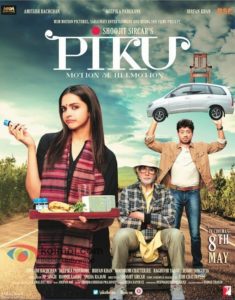The plotless novel, story, or movie seems an oxymoron. After all, weren’t we told in high school, college, and grad school by every English and creative writing professor we had to plot out our stories? In every literature class we took, didn’t the instructor talk about plot?
So what the heck is a “plotless” story?
Perhaps, though, we should talk a little bit about plot before we talk about no plot. So what exactly is a “plot”?
Webster’s New World Dictionary, Second College Edition defines plot as “the plan of action of a play, novel, poem, short story, etc.” However, Ronald B Tobias, in Twenty Master Plots and how to write them, would seem to disagree. He notes, “Plot isn’t a wire hanger that you hang the clothes of your story on.” He goes on to declare, “Plot is a process, not an object.” And “Plot is dynamic, not static.”
Basically what Tobias is attempting to say is that the writer has a story to tell. How the writer tells the story, what pattern he or she uses to tell the tale, is in essence the plot of the story. Story is a chronicle of events for Tobias and plot answers the question, “Why?” Why is this particular series of events played out this way? Plot gives story form, according to Tobias.
And yet for all Tobias’s arguing against planning, he is essentially planning. Plot imposes structure on story. Take a simple story. Say the story of Adam and Eve. According to Tobias, what we have is a chronicle of events. Adam has a garden, he is given a partner, they are told don’t eat the fruit of a certain tree, the partner convinces Adam to eat the fruit, and they get kicked out of the garden. According to Tobias, depending on which of his twenty plots you choose, you impose structure on the story and give it form. You could impose a puzzle plot and make it a mystery. Or an adventure plot or a quest plot or a forbidden love plot.
To my mind, we are back to Creative Writing 101. The story is an idea and plot gives it form.
Now one can certainly approach writing that way and that approach does work for many. But it doesn’t have to be that way. There is another way. One which I think is organic and was mentioned by Ray Bradbury.
Bradbury supposedly said, “Create your characters, have them do their thing, and that is the story.” It seems to me, Bradbury is turning Tobias on his head. Story is not a series of events upon which the writer must impose structure. Story is the natural result of what the characters do. Story is the chronicle of the characters living out their lives.
So how does this all relate to the plotless novel, or movie, or short story? Good question.
Recently, my wife and I watched the movies Piku and Love Actually. Both films have exceedingly simple story lines. In fact, one could say the story in both films isn’t even very interesting. But what is interesting and captivating in both movies are the characters. Without the characters doing their thing, neither movie would even have a story. The storylines exist so the characters can do their thing. Both movies are hilarious and touching and make telling statements about life. Yet nothing much happens in either one. Yet momentous decisions are made by the characters which have a profound effect on themselves and those around them.
The movie Little Big Man, one of my favorites by the way, also has very little plot. It is the story, told in vignettes, of a man’s life. And yet it is one of the most moving and poignant movies I’ve ever seen. Little Big Man does his thing and the result is a fabulous story.
The plotless story has been around for a long time. In the 19th century it was called the “Sketch”. A sketch has no discernible plot. It’s purpose is to evoke emotion in the reader. Sketches aren’t so popular today and I can’t understand why. They can be highly effective tales. Wonderful for blog posts. Here is modern example, which I think is simply brilliant: “A Fluttering On The Floor”.
You won’t find the plotless story as much in genre fiction as you will in literary fiction. However, Bradbury’s story “The Highway”, from The Illustrated Man, is an excellent example of a plotless sci-fi story. Very little actually happens. But the protagonist’s thoughts and reactions to what does happen are thought-provoking.
The same can be said for Kazuo Ishiguro’s foray into sci-fi, the novel Never Let Me Go. There is some action, but it too seems to exist as nothing more than the stage upon which the characters stand. It’s what the characters do and don’t do that make the movie and book so poignant.
In some ways, I’d class The Maltese Falcon, if not plotless, at least placing little importance on the murder mystery. Even though the falcon is supposed to be the McGuffin, it is in actuality a symbol of how we live our lives. We chase something and chase it and sacrifice everything for it and when we get it, we find out it’s nothing. It’s an illusion, a fake. To my mind, the murder is in a sense the real McGuffin. It’s the event in the background that drives Spade. I don’t think he really cares who killed his partner or even if the killer is caught. What he does care about is clearing his name so he doesn’t take the rap for the murder — even if he has to throw people under the bus to do it. Which in my opinion he does.
The Maltese Falcon isn’t about murder, it’s about Sam Spade. The murder and the falcon are simply Spade doing his thing. And in the process we learn he isn’t very likable. In some ways, he’s a little bit too much like us.
The plotless story isn’t really plotless. It’s just that the plot isn’t all that important. The plot exists but doesn’t drive the story. The characters doing their thing is what drives the story — and them doing their thing is what is important. Because what they do and how they react gives us a glimpse as to who they really are and, if the writer is worth his or her salt, who we really are. After all, isn’t that at least partly why we read fiction? To see ourselves in the main characters? To vicariously experience through them what we can’t actually experience? To be who we want to be and to see condemned in them what we don’t often condemn in ourselves — at least publicly?
Characters, like the play, are the thing. All of this emphasis on plot and outlining and structure is to my mind missing the point. We don’t read books for the great plots. We read them for the characters. How many plots stick in your memory? Contrast that with how many characters are there.
As always, comments are welcome! I’d love to read your thoughts on the plotless novel. And until next time, happy reading!
Share This!

